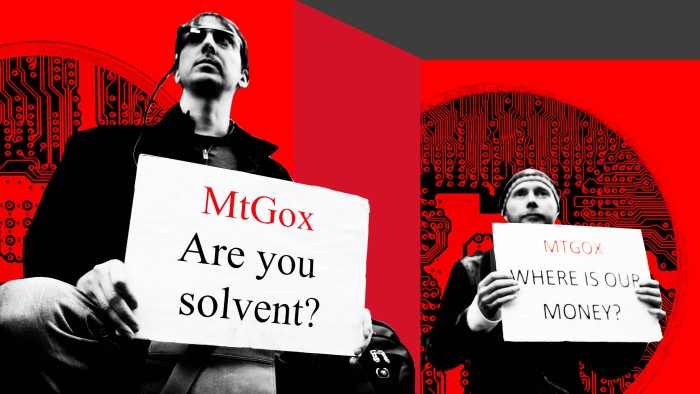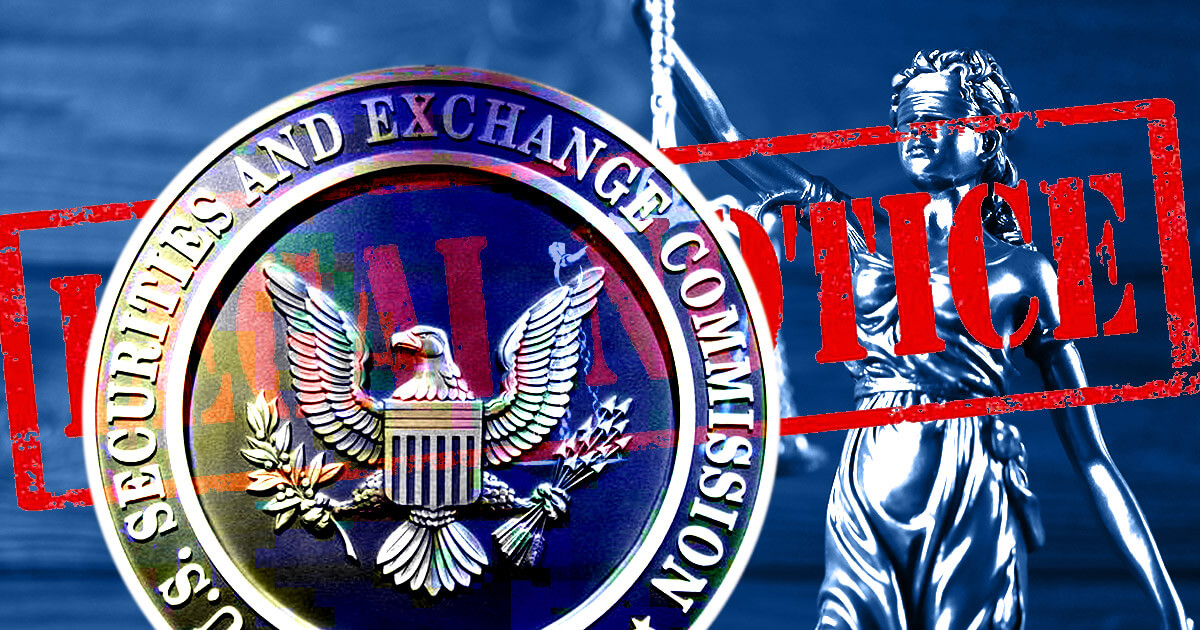Hours after Sam Bankman-Fried, co-founder of FTX and poster child of the crypto industry, was convicted of fraud and money laundering in New York, one of his leading venture capital backers had his say.
“Immediately after FTX collapsed, we extensively reviewed our due diligence process and evaluated our 18-month working relationship with Sam Bankman-Fried,” said Alfred Lin, partner at Sequoia Capital. “We concluded that we had been deliberately misled and lied to.”
Crypto sceptics would argue that Lin was hardly the first to be taken in. Ever since bitcoin was created in 2009, the industry has variously been associated with illicit trading, such as the now defunct Silk Road marketplace, or business failures such as the 2014 collapse of Mt Gox, which at its peak handled almost three-quarters of all bitcoin in circulation.
At the height of his power, Bankman-Fried was seen as the industry’s most likely route to respectability. Alongside Sequoia, FTX boasted mainstream backers such as Tiger Global, Singapore’s state-owned Temasek and the Ontario Teachers’ Pension Plan.
In Washington, Bankman-Fried testified before congressional committees, supported more regulation and became a major political donor.
In the Bahamas, where FTX was based, Prime Minister Philip Davis championed the company as a marquee acquisition as the Caribbean country’s economy sought its next economic boost.
Meanwhile, FTX secured celebrity endorsements and signed sponsorship deals with Major League Baseball, the Miami Heat basketball franchise and the International Cricket Council. It filmed a Super Bowl advertisement with actor and producer Larry David.
But on November 2, a 12-person New York jury needed less than five hours to reach unanimous agreement that Bankman-Fried was guilty of seven charges.
“Sam Bankman-Fried perpetrated one of the biggest financial frauds in American history,” said US attorney for the Southern District of New York Damian Williams. “This kind of fraud, this kind of corruption is as old as time, and we have no patience for it.”
As crypto’s former leading light contemplates a possible lengthy jail sentence, the industry he championed could go one of two ways: either it collectively regroups and tries — all over again — to be accepted in the world of mainstream finance, or it falls back on its longstanding image as a niche market for speculators, day traders and those who fervently believe money should remain separate from the state.
For John Reed Stark, former chief of the Securities and Exchange Commission’s office of internet enforcement, the trial verdict is “a death knell for crypto, Web 3 and blockchain.”
“This is an industry that has run its course,” he says. “If it all went away tomorrow, it wouldn’t impact a single person on the planet other than the speculator.”
But others believe the industry can recover from the denouement of Bankman-Fried and become a part of mainstream finance.
“Crypto’s public image is at an all-time low, but the industry isn’t done yet,” says Charles Storry, head of growth at crypto futures index platform Phuture.
An inglorious history
The ignominious conclusion of Bankman-Fried’s career follows more than a decade of non-compliance with traditional financial rules, run-ins with regulators around the world, and accusations that cryptocurrencies are used to fund terrorism and the proliferation of nuclear weapons. Meanwhile, the computing power needed to “mine” crypto assets like bitcoin generates a carbon footprint roughly equivalent to a country the size of Ukraine.
FTX’s bankruptcy in 2022 capped off a crisis of confidence that resulted in popular digital assets such as bitcoin and ether losing more than half their value. Other once prominent firms like Terraform Labs and Three Arrows Capital also collapsed.
In response, lawmakers and regulators in multiple jurisdictions stepped up their oversight of the sector to unprecedented levels during 2023. US regulators have issued a blitz of enforcement cases and lawsuits against some of the biggest crypto companies still standing. They include US-listed Coinbase — which is facing an SEC lawsuit after allegedly violating securities laws — and Binance, FTX’s great rival and the world’s largest crypto exchange by some distance.
The Commodity Futures Trading Commission sued Binance in March, alleging it had illegally accessed US customers and that it knew it facilitated potentially illegal activities.

Three months later, the SEC filed a lawsuit of its own against Binance, alleging that it had mixed customers’ cash with a separate trading firm owned by its chief executive Changpeng Zhao. Both Binance and Coinbase have denied the allegations and said they will fight their respective lawsuits.
In the wake of the October 7 atrocities, Israeli law enforcement authorities closed more than 100 Binance accounts and identified about 150 crypto donation initiatives affiliated with Hamas, prompting renewed allegations about the industry’s ties to financing terrorism and fresh calls for a crackdown.
“This industry came to prominence after the failure of Mt Gox and the controversy of Silk Road,” says Charley Cooper, a former chief of staff at the CFTC. “Throughout its history, it has had multiple scandals — as a far greater proportion of their market — than any other industry has had.”
“The majority of doctors are not defrauding the healthcare system, the majority of lawyers are not violating court ethics. The Wall Street guys, you can call them greedy, but they’re not breaking the law,” Cooper adds.
Yesha Yadav, professor of law at Vanderbilt Law School, describes Bankman-Fried’s conviction as “a monumentally important moment” for the wider crypto sector. “That the jury came back so decisively really highlights how far and how deeply a key symbol of the industry had fallen . . . it’s hard to imagine a bigger reputational hit.”
Those working in the industry are concerned that their career prospects could be damaged as a result. One professional who contacted the Financial Times says he is “a little concerned with how being affiliated with crypto could be perceived for recruiting for traditional industries.”
He has lost money with FTX as well as Voyager, another crypto company that collapsed last year. “The experience has made me a lot more conservative,” he adds.
Crypto glasnost
After FTX filed for bankruptcy last November, influential voices in the sector called for a renewed focus on transparency.
Binance’s Zhao said “all crypto exchanges” should provide proof of reserves and committed his own business to “full transparency”. Days later, rival exchange OKX said it was launching its first proof of reserves “to set a new standard of transparency, risk management and user protection”.
But according to figures from industry data provider CCData, only about a third of crypto exchanges currently offer proof of reserves or alternatives, such as regularly audited financial statements.
Those exchanges that have offered some form of financial transparency to their customers account for about 81 per cent of the market, but that is down from 86 per cent in March — and about the level it was in November 2022, when FTX went bust.
According to Jacob Joseph, research analyst at the CCData, this suggests that “proof of reserves might have become less discerning to users compared to the early months after the collapse of FTX”.
James Newman, co-head of perfORM Due Diligence Services Limited, says the largest and most influential of exchanges “have taken steps to bring additional transparency over the assets they hold”.
“However, there are many that have been slow in adopting proof of reserves,” he adds, saying it is “likely symptomatic of the continued dominance of retail money held on exchanges who do not speak as one voice”.
Retail traders — individuals trading for themselves — have been instrumental in the sector’s growth. But many feel it now needs to widen its appeal. “Crypto’s survival relies on external support and belief from other industries,” says Storry. “Retail is on board, but we now need institutional backing to take the industry to the next level.”
There are signs this is happening. In the summer, payments giant PayPal became the first major financial institution to launch a US dollar-pegged crypto token. The company has offered trading in the world’s most popular cryptocurrencies since 2020, but the launch of a so-called stablecoin — a crypto asset whose price tracks that of a more recognised asset, often a conventional currency — marked a major boon for a troubled sector.
Even greater hopes for institutional backing rest on BlackRock, the world’s largest asset manager, gaining SEC approval to launch a spot bitcoin exchange traded fund. That would allow investors to speculate on bitcoin within a regulated financial vehicle run by a recognised name.
Last month, as speculation grew over BlackRock’s application possibly being approved, bitcoin’s price surged to $35,000, erasing all the losses it had racked up since the crypto market crisis began in May 2022.

“There are signs of entry into this industry if you know where to look: we are talking about BlackRock launching a bitcoin exchange traded fund and PayPal launching a dollar-pegged stablecoin,” says Ilan Solot, co-head of digital assets at financial services firm Marex.
But nothing is set in stone. The SEC, led by chair Gary Gensler, has so far resisted approving any such applications and may never give BlackRock — or any other candidate — the green light to take bitcoin to the mass market.
Lawmakers have also turned more circumspect. Last month, Senator Cynthia Lummis and Representative French Hill urged the Department of Justice to consider criminal charges against Binance and Tether, the largest trading exchange and the largest stablecoin issuer, respectively.
Following Hamas’s attack on Israel, more than 100 lawmakers from both major political parties in the US signed a letter urging the Biden administration to outline the steps it is taking to mitigate cryptocurrencies being used as a means of financing terrorism.
“It’s going to be harder to get legislation passed in the US, and there will now be a colder reception in Congress,” says one crypto industry lobbyist in Washington. It remains to be seen in 2024, whether Coinbase and Binance are as willing — or even as able — to lobby regulators and politicians as FTX once was.
Back to first principles
The irony of crypto’s push for respectability is not lost on Reed Stark, the ex-SEC executive. “All of these crypto guys are now crying out for a bitcoin ETF, but started the bitcoin project because they were upset about the 2008 banking crisis. They were upset about the government being able to surveil their financial transactions,” he points out.
“So what do they do? They rally around one of the biggest financial services companies in the world because there’s nothing left. It’s the ultimate hypocrisy,” he adds.

But while many in the industry have pinned their hopes on a mainstream future, another branch would prefer crypto to go back to its roots.
Erik Voorhees, founder of crypto platform ShapeShift and an unabashed libertarian, last month issued a rallying cry to those still faithful to the original crypto cause.
“Why do we accept this world in which we are free to transact only on the conditional approval of strangers?” he asked. “This of course is not freedom. It is subservience, it is serfdom, and that the chains bear lightly down in most cases should not lull us into forgetting that the chains exist.”
Instead of walking head first into an increasingly hostile crowd of regulators and lawmakers, Voorhees and others like him are pushing for the industry to go back to first principles: permissionless finance that stands as an explicit rejection of the establishment, government oversight and unelected regulators.
“What prevents the man of tomorrow from even greater servitude? We do . . . we are building the economic defence of modern society against plunder and restriction by the state, we are saying no to the perpetual encroachment of permissioned existence,” Voorhees added.
Balaji Srinivasan, author, investor and former chief technology officer at Coinbase, launched the Network State conference last month in Amsterdam in a bid to “build the parallel establishment”.
Speakers including Vitalik Buterin and Anatoly Yakovenko — the minds behind the popular ethereum and solana crypto blockchains, respectively — and the Winklevoss twins — who founded the Gemini crypto exchange — all attended.
“This is a meeting of all the people building the parallel establishment. That’s more than parallel money. It’s parallel media, parallel education, parallel science, parallel construction, even parallel cities,” Srinivasan said.
After the scandalous demise of crypto’s former poster boy, the decision to retreat from a losing battle with lawmakers and regulators may be tempting, but it is a decision that risks undermining a market that is already thinly traded.

At the start of 2023, it would have required the purchase of more than 1,400 bitcoins — about $23mn at the time — to move the price of the token by more than one per cent, according to numbers shared by data provider CCData.
But by the end of April, it would have taken only 462 bitcoins — then worth about $13mn — to achieve the same market movement. This was the lowest point of market depth for bitcoin and tether, the world’s largest stablecoin, since May 2022 when the sector plunged into chaos.
Today’s numbers have improved, but still do not portray a widely traded market with retail momentum and fresh money coming in; it would now take 752 bitcoins, worth about $26mn, to move the price of the coin.
“Bankman-Fried’s guilty verdict has been priced in for a long time, in my view,” says Solot, of Marex.
“But hypothetically, if this proved to be the major fork in the road where crypto adoption slowed down or even failed, the risk . . . is that you would only have internal money sloshing around in the market, and it basically atrophies.”
“There would be no new money, there would be no growth.”
Credit: Source link

















































